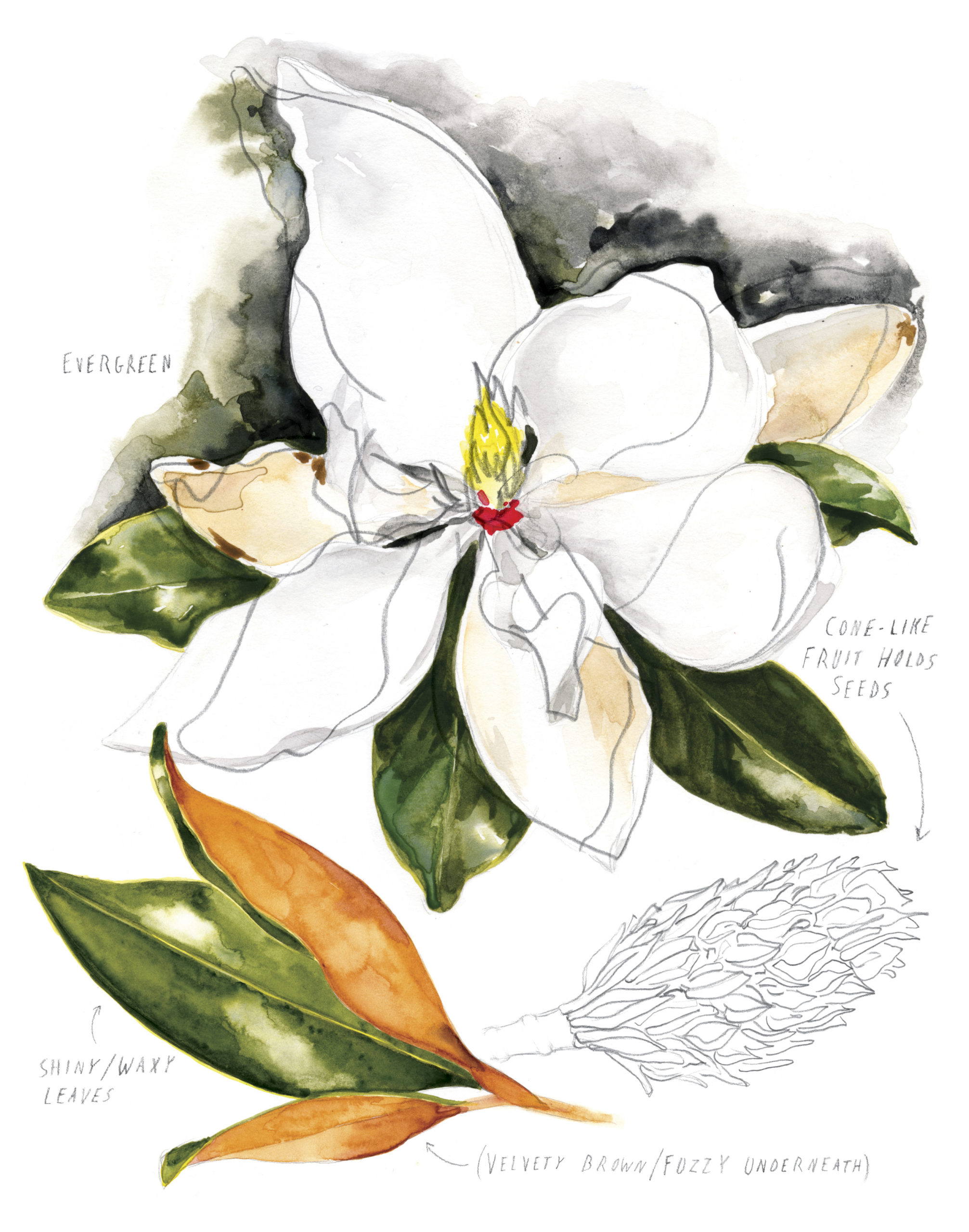One of the earliest signs of summer is the sweet fragrance provided by our state tree and state flower, the Southern magnolia.
With large, white flowers expanding to 10 inches across, the fragrance is as grand as the showy blossoms. This tree is truly a Southern species, naturally occurring in the southern half of Mississippi and throughout the Southeastern Coastal plain. However, magnolias can be planted throughout the state and have been planted ornamentally as far north as Vermont.
While the blossoms are the primary draw, the magnolia has many unique features. Growing primarily in mesic, deciduous forests, this evergreen species particularly stands out in winter when other hardwoods have shed their leaves. Southern magnolias have thick leaves that are shiny and waxy above and velvety brown and fuzzy beneath.
As summer temperatures rise, the large petals eventually deteriorate and a fruit resembling a woody cone develops at the end of the trees’ branches. As the fruits mature, many large and shiny red seeds eventually erupt and hang suspended on a white piece of silk-like hair. This strategy entices birds flying nearby to feed on the protein-rich seeds hanging from each ‘cone’ and provides a hearty meal as the birds prepare for a southward migration. This mechanism of dispersal allows for the continued existence of Southern magnolias.
Southern magnolias have few pests and, as an evergreen tree, provide year-round shade. Applying mulch around the base of the magnolia prevents the tree from drying out during the hot, Mississippi summers and aids in the retention of water for its shallow roots.

